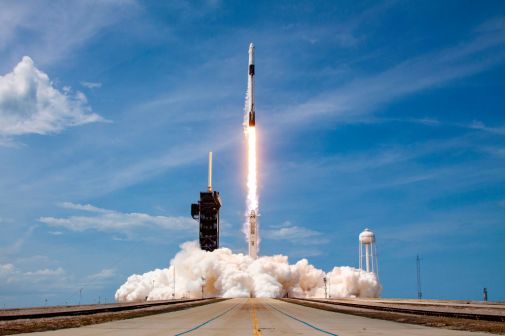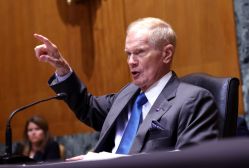Commercial and personal space travel has progressively been gaining traction since the end of NASA’s space shuttle program in 2011. And now NASA’s commercial crew program is one step closer to being a reality.
The agency announced May 30 that three commercial space companies have completed the Certification Products Contracts, which safely ensures that space travel systems are reliable and cost-effective.
As part of NASA’s $30 million Commercial Crew program, the companies — Boeing, Sierra Nevada Corporation Space Systems and SpaceX — are required to explain how they will meet the criteria necessary to transport crew members from United States soil to the International Space Station.
Throughout the process of filing the CPC, companies had to show safety as a a key element in their plans and were also required to detail how their space travel systems meet the requirements already established by NASA.
“It’s allowed them to mature their plans and gave us additional insight into each company’s approach,” Ed Burns, systems engineering and integration acting manager for NASA’s Commercial Crew Program said. “It also gave our NASA team and the partners a chance to work together towards certifying their systems.”
With the first phase of certification complete, NASA will kick off the second CPC phase of Commercial Crew Transportation Capability, which is open to any company with the resources to produce designs comparable to those by the three companies in the first stage.
After the second phase is complete, companies awarded will have the chance to conduct at least one crewed flight test. This test will help verify whether or not the spacecraft can successfully dock to the ISS.
“This certification is important to ensuring our crew members have reliable transportation to and from the space station where they are conducting research essential to advancing human exploration farther into the solar system,” Phil McAlister, director of Commercial Spaceflight at NASA’s Washington Headquarters said.
Prior to the CPC phase, NASA held two development phases and awarded Boeing more than $110 million, Sierra Nevada Corporation $100 million and SpaceX $75 million.
“There’s more than one correct way to build a spacecraft, and CPC has been an invaluable learning process for our industry partners and the agency,” Kathy Lueders, NASA’s Commercial Crew Program manager said. “It is extremely exciting to see the unique approach each company brings to the table.”
In early 2010, the Obama administration proposed tasking private companies with the responsibility of servicing the ISS, with supervision from NASA. The first phase of contracting for the Commercial Crew Development program began later in 2010. The first privately-sponsored and operated shuttles to the ISS are expected to launch in 2017 and remain docked at the station from 12 to 210 days.
However, the ISS Commercial Crew program is not the only commercially-backed initiative to get the private sector into space. According to their website, Bigelow Aerospace is planning to launch craft to build a new, commercial space station. The company also recently landed a $17.8 million NASA commission for a test demonstration for a new ISS module.
Google is also spearheading an international effort to send a private sector lunar lander to the moon. The competition ends in 2015 and could result in $20 million from Google for the winning company.
The private company Mars One is also attempting to establish a human settlement on Mars by 2023, according to the company’s website.
“We’re making great strides toward returning human spaceflight launch capability to U.S. soil,” McAlister said.





